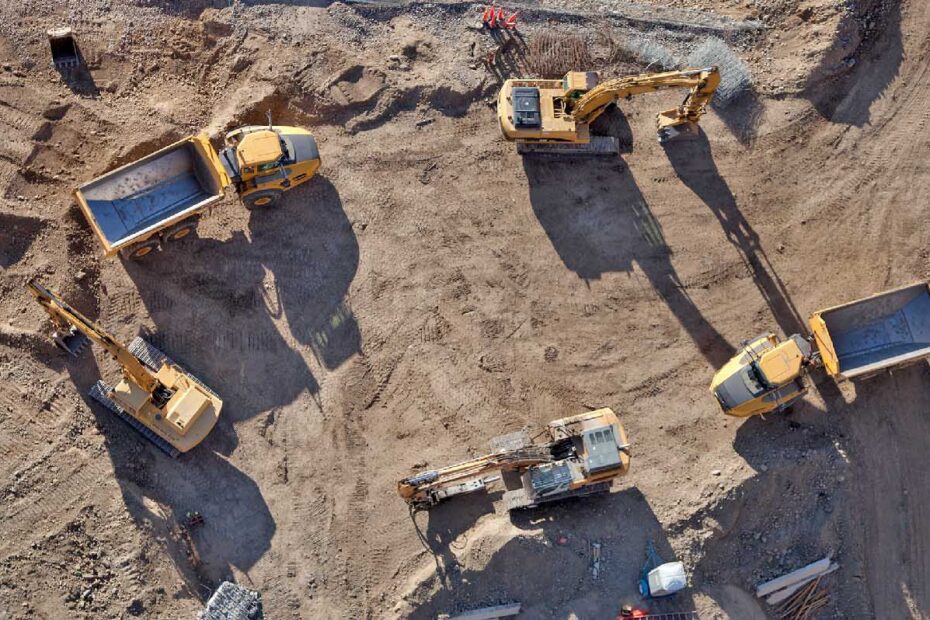Hot shot trucking fleet safety is crucial for minimizing risks and ensuring smooth operations. Maintaining proper safety protocols, such as regular maintenance checks and driver training, plays a vital role in preventing accidents and injuries.
Additionally, implementing technology solutions like telematics systems can aid in monitoring driver behavior and improving overall fleet safety.
Importance Of Hot Shot Trucking Fleet Safety
Safety is of utmost importance in the hot shot trucking fleet industry. With a focus on maintaining a secure environment, businesses can ensure the protection of their drivers and cargo, as well as reduce accidents and associated costs.
Hot shot trucking fleet safety plays a pivotal role in ensuring smooth operations and safeguarding the well-being of drivers, goods, and other road users. Implementing effective safety measures is essential to mitigate risks associated with unsafe hot shot trucking and to ensure long-term business success.
Let’s explore the risks associated with unsafe hot shot trucking, statistics on accidents and injuries in the industry, and the impact of safety measures on business success.
Risks Associated With Unsafe Hot Shot Trucking:
- Fatigue-related accidents: Excessive driving hours and lack of sleep can lead to driver fatigue, impairing alertness and decision-making abilities.
- Vehicle breakdowns: Poor maintenance practices and inadequate inspections may result in unexpected breakdowns, causing delays and potential accidents.
- Improper loading: Incorrectly loaded cargo can lead to load shifting, which jeopardizes stability and increases the risk of accidents.
- Speeding and reckless driving: Engaging in aggressive driving behaviors can significantly increase the likelihood of accidents and injuries.
Statistics On Accidents And Injuries In The Industry:
- According to the Federal Motor Carrier Safety Administration (FMCSA), there were approximately 6,000 fatal crashes involving large trucks in the United States in 2019.
- The Bureau of Labor Statistics reports that transportation and material moving occupations, including truck drivers, have a higher rate of fatal work injuries compared to other occupations.
The Impact Of Safety Measures On Business Success:
- Enhanced reputation: Maintaining a reputation for safety reassures clients that their cargo will be handled responsibly, leading to repeat business and positive word-of-mouth referrals.
- Reduced insurance costs: Implementing robust safety measures can result in lower insurance premiums, contributing to cost savings for the business.
- Regulatory compliance: Adhering to safety regulations ensures compliance with FMCSA standards, helping to avoid penalties and potential legal issues.
- Increased driver morale and retention: Prioritizing safety demonstrates a commitment to the well-being of drivers, leading to higher job satisfaction and retention rates.
By prioritizing hot shot trucking fleet safety, businesses can not only protect lives and goods but also enhance their overall reputation, reduce costs, comply with regulations, and increase driver loyalty. Implementing safety measures is a smart investment that yields long-term benefits and contributes to the overall success of the business.
Ensuring Driver Safety
Ensuring driver safety is a top priority for hot shot trucking fleets. By implementing comprehensive safety protocols, conducting regular vehicle inspections, and providing ongoing training, fleet managers can minimize risks and promote a secure working environment for drivers.
Driver Training And Qualifications:
- Hot shot trucking companies prioritize driver safety by ensuring that all their drivers undergo comprehensive training and possess the necessary qualifications.
- Drivers are required to complete rigorous training programs that cover various aspects of safe driving, including defensive driving techniques, load securement, and emergency procedures.
- Additionally, they must obtain the appropriate commercial driver’s license (CDL) and medical certifications to ensure they are physically fit to operate hot shot trucks.
- This emphasis on training and qualifications ensures that drivers are well-prepared to handle the challenges of the job and prioritize safety on the road.
Regular Vehicle Inspections And Maintenance:
- To maintain high levels of safety, hot shot trucking companies regularly inspect and maintain their fleet of vehicles.
- Trucks and trailers undergo routine inspections to identify any potential issues or maintenance requirements.
- This includes inspecting essential components such as brakes, tires, lights, and coupling mechanisms.
- Any signs of wear and tear or potential hazards are addressed promptly to prevent accidents and ensure the safe operation of the vehicles.
- Regular maintenance and inspections help to identify and rectify mechanical issues before they compromise driver safety, contributing to a safer hot shot trucking fleet.
Implementing Fatigue Management Strategies:
- Fatigue is a significant concern in the trucking industry, as tired drivers pose an increased risk of accidents. Hot shot trucking companies recognize this and implement various strategies to manage driver fatigue effectively.
- Drivers are educated on the importance of adequate rest and encouraged to follow proper sleep schedules to reduce fatigue on the road.
- Additionally, mandatory rest breaks and maximum driving hour limits are enforced to prevent excessive fatigue accumulation during long hauls.
- Technological solutions, such as fatigue monitoring systems or electronic logging devices, are utilized to monitor driver hours and ensure compliance with regulations.
- By prioritizing fatigue management, companies enhance the safety of their drivers and promote a culture of wellness within their hot shot trucking fleet.
Enhancing Vehicle Safety
Enhancing hot shot trucking fleet safety is paramount to ensuring vehicle safety. Implementing advanced technology and driver training programs can significantly reduce accidents and improve overall safety standards.
Hot Shot Trucking Fleet Safety:
When it comes to hot shot trucking, vehicle safety is of utmost importance. Ensuring the safety of your fleet not only protects your drivers and cargo but also helps to build a reputable brand that clients can trust. By taking proactive measures to enhance vehicle safety, you can minimize the risk of accidents and delays, resulting in a more efficient and successful trucking operation.
In this section, we’ll explore some key strategies for enhancing vehicle safety in hot shot trucking.
Choosing The Right Vehicles For Hot Shot Trucking:
- Selecting vehicles that are well-suited for hot shot trucking is the first step in ensuring vehicle safety. Consider the following factors when choosing your vehicles:
- Payload capacity: Opt for trucks that can handle the weight and size of the loads you typically transport.
- Fuel efficiency: Look for vehicles that are fuel-efficient to reduce both costs and environmental impact.
- Reliability: Choose trucks from reputable manufacturers known for their durable and dependable vehicles.
- Safety features: Prioritize vehicles equipped with advanced safety features, such as anti-lock braking systems (ABS), stability control, and blind-spot detection technology.
Installing Safety Equipment And Technologies:
- Installing the right safety equipment and technologies in your hot shot trucks can significantly enhance vehicle safety. Consider the following measures:
- GPS tracking systems: Install GPS tracking devices to monitor the location and movement of your vehicles in real-time. This allows for effective route planning and improves response time in case of emergencies.
- Dash cameras: Implementing dash cameras can help capture and analyze critical events on the road, providing valuable evidence in the event of accidents or disputes.
- Blind-spot mirrors/sensors: Enhance visibility by installing blind-spot mirrors or sensors to minimize the risk of accidents caused by blind spots.
- Backup cameras: Install backup cameras to assist drivers in safely maneuvering their vehicles, especially when reversing.
Monitoring Vehicle Performance And Addressing Issues:
- Regularly monitoring vehicle performance and addressing any issues that arise is crucial for maintaining optimal safety levels. Consider the following practices:
- Routine inspections: Conduct regular inspections to identify any mechanical or safety issues that may compromise your vehicles’ performance.
- Maintenance schedules: Create and adhere to a comprehensive maintenance schedule to ensure that all necessary repairs and tasks are regularly undertaken.
- Driver reports: Encourage drivers to report any vehicle-related issues promptly, allowing for swift action to be taken.
- Training programs: Offer driver training programs focused on vehicle safety, covering topics such as defensive driving techniques, emergency procedures, and proper vehicle maintenance.
By choosing the right vehicles, installing safety equipment and technologies, and consistently monitoring vehicle performance, you can enhance vehicle safety in your hot shot trucking fleet. These measures not only protect your drivers and cargo but also contribute to the overall success and reputation of your trucking operation.
Invest in safety today and reap the benefits tomorrow.
Securing Freight And Cargo
Secure your freight and cargo with our hot shot trucking fleet safety measures. We prioritize safety to ensure your goods reach their destination without any compromise. Trust our team for reliable and secure transportation solutions.
Hot Shot Trucking Fleet Safety:
In the fast-paced world of hot shot trucking, the safety of your fleet’s freight and cargo is of utmost importance. Properly securing your cargo not only protects your shipment, but also ensures the safety of the driver and other vehicles on the road.
Let’s explore some essential techniques and systems that can help you maintain the highest level of safety while transporting goods.
Proper Loading And Weight Distribution Techniques:
- Ensure that cargo is evenly distributed throughout the trailer to maintain stability during transit.
- Follow the weight limits and guidelines set by authorities to prevent overloading or unbalanced loads.
- Use load bars or cargo straps to secure loose items and prevent shifting during transportation.
- Consider using pallets or containers to enhance stability and minimize the risk of damage during transit.
Securing Cargo With Appropriate Restraints:
- Utilize a combination of straps, chains, and tie-downs to secure cargo firmly to the trailer floor or walls.
- Regularly inspect and replace any worn-out or damaged restraints to maintain their effectiveness.
- Use corner protectors or edge guards to prevent sharp edges of cargo from damaging the straps or trailer.
- Pay attention to securing hazardous materials according to the specific regulations and guidelines.
Utilizing Gps Tracking And Security Systems:
- Install GPS tracking devices on your fleet vehicles to monitor their location in real-time.
- Utilize geofencing capabilities to receive alerts when vehicles deviate from designated routes or predetermined areas.
- Implement security systems that include alarms, immobilizers, and surveillance cameras to deter theft or unauthorized access.
- Develop protocols to handle any security breaches promptly and efficiently.
Remember, the effective securing of freight and cargo is crucial for hot shot trucking fleet safety. By following proper loading techniques, utilizing appropriate restraints, and leveraging GPS tracking and security systems, you can ensure the smooth transportation of goods while minimizing risks.
Stay proactive and dedicated to maintaining safety standards to meet the demands of the industry and keep your fleet and cargo safe and secure.
Maintaining Compliance With Regulations
Maintaining compliance with regulations is crucial for a hot shot trucking fleet’s safety. Adhering to regulatory requirements ensures the safety of drivers, cargo, and other road users, promoting a responsible and secure transportation system.
Hot Shot Trucking Fleet Safety
Hot shot trucking is a fast-paced industry that demands efficiency, reliability, and above all, safety. Ensuring the safety of your hot shot trucking fleet involves various aspects, one of the most critical being maintaining compliance with federal and state regulations.
These regulations are put in place to safeguard both the drivers and the general public on the road. Let’s take a closer look at the key factors involved in maintaining compliance with regulations.
Understanding Federal And State Regulations
To operate a hot shot trucking fleet legally and safely, it’s crucial to have a thorough understanding of the federal and state regulations that govern the industry. These regulations cover a wide range of aspects, including driver qualifications, vehicle safety standards, and cargo requirements.
Here’s what you need to know:
- Driver qualifications: Drivers must possess the appropriate commercial driver’s license (CDL) and meet specific requirements, such as age restrictions, medical certifications, and clean driving records.
- Vehicle safety standards: Hot shot trucks must comply with federal regulations regarding vehicle maintenance, inspections, and safety equipment. Regular inspections and proper maintenance are essential to ensure the fleet’s safety.
- Cargo requirements: Certain types of cargo may have specific regulations or require special permits. It’s crucial to familiarize yourself with the regulations applicable to the type of cargo your fleet transports.
Driver Hours Of Service Requirements
Driver fatigue is a significant safety concern in the hot shot trucking industry. To mitigate the risk of accidents caused by tired drivers, federal regulations dictate specific hours of service requirements. Here are the key points to understand:
- Maximum driving hours: Drivers are limited in the number of hours they can be behind the wheel within a specific timeframe. It’s important to ensure that drivers are not exceeding these limits to prevent fatigue-related accidents.
- Rest and break periods: Drivers must take regular rest and break periods to prevent exhaustion. These periods are designed to promote safe driving practices by ensuring adequate rest for the drivers.
Ensuring Proper Permits And Licenses Are Obtained
Hot shot trucking often involves transporting goods across state lines or handling specialized cargo. To comply with regulations, it’s essential to obtain the necessary permits and licenses. Here’s what you need to consider:
- Interstate permits: If your hot shot trucking fleet operates across state lines, you’ll need to obtain the appropriate interstate operating authority or permits. Failure to comply with these requirements can result in fines and penalties.
- Specialized permits: Certain types of cargo, such as hazardous materials, oversized loads, or livestock, may require specialized permits. It’s crucial to identify the specific permits needed for your operations and ensure they are obtained before transporting such cargo.
By understanding federal and state regulations, adhering to driver hours of service requirements, and obtaining the necessary permits and licenses, your hot shot trucking fleet can maintain compliance and prioritize safety. Compliance with regulations not only reduces the risk of accidents and penalties but also contributes to a positive reputation in the industry.
Stay informed, train your drivers, and prioritize safety in every aspect of your hot shot trucking operations.
Developing A Safety Culture
Developing a safety culture is crucial for hot shot trucking fleet safety. By implementing effective training programs and fostering a proactive mindset among drivers and staff, organizations can create an environment that prioritizes safety and reduces the risk of accidents and injuries.
Safety should be a top priority for any hot shot trucking fleet. Developing a strong safety culture within your organization helps to ensure the well-being of your drivers, protect your assets, and maintain a positive reputation in the industry. By establishing safety policies and procedures, encouraging open communication and reporting incidents, and recognizing and rewarding safe practices, you can create a safety-focused environment.
Establishing Safety Policies And Procedures:
- Develop comprehensive safety policies and procedures that cover all aspects of hot shot trucking operations. This includes driver training, vehicle maintenance, cargo securement, and compliance with regulations.
- Clearly communicate these policies and procedures to all employees, ensuring that everyone understands their roles and responsibilities in maintaining safety.
- Regularly review and update the policies and procedures to reflect changes in regulations or industry best practices.
Encouraging Open Communication And Reporting Incidents:
- Foster a culture where employees feel comfortable reporting safety concerns, near misses, and incidents without fear of repercussions.
- Implement a confidential reporting system, such as an anonymous hotline or online reporting tool, to encourage employees to speak up.
- Establish a process for investigating and addressing reported incidents promptly, taking appropriate corrective actions to prevent reoccurrence.
Recognizing And Rewarding Safe Practices:
- Implement a safety incentive program that rewards drivers and employees for practicing safe behaviors and adhering to safety policies.
- Recognize and celebrate achievements in safety, such as accident-free periods or exemplary safety records.
- Provide ongoing training and support to help drivers and employees improve their safety performance and stay up-to-date with best practices.
By prioritizing safety, developing clear policies and procedures, fostering open communication, and recognizing and rewarding safe practices, you can cultivate a safety culture that helps protect your hot shot trucking fleet, employees, and reputation in the industry.
Evaluating And Improving Safety Performance
Evaluating and improving safety performance is crucial for hot shot trucking fleets. By implementing effective strategies and training programs, companies can enhance safety measures, reduce accidents, and protect their drivers and cargo. Taking proactive steps to prioritize safety is essential in this industry.
Hot Shot Trucking Fleet Safety:
Ensuring the highest level of safety performance is crucial for any hot shot trucking fleet. By conducting regular safety audits and inspections, analyzing incident data, and implementing corrective actions and continuous improvement measures, fleet managers can minimize risks and protect both their drivers and the public.
Let’s take a closer look at each of these aspects.
Conducting Regular Safety Audits And Inspections:
- Regularly review the fleet’s safety protocols and procedures to identify potential weaknesses and areas for improvement.
- Conduct thorough inspections of vehicles and equipment to ensure they meet safety requirements and are well-maintained.
- Evaluate driver training programs to guarantee they are up-to-date and provide adequate safety education.
- Perform audits of driver logs and records to ensure compliance with hours-of-service regulations and prevent driver fatigue.
- Regularly assess driver performance, including monitoring their driving habits, adherence to safety protocols, and compliance with traffic laws.
Analyzing Incident Data And Identifying Trends:
- Collect and analyze incident data, including accidents, near misses, and driver errors, to identify patterns and trends.
- Identify common causes of accidents or violations and develop strategies to prevent them.
- Look for recurring safety issues and assess their impact on the fleet’s overall safety performance.
- Utilize technology tools, such as telematics and onboard cameras, to gather real-time data and improve the accuracy of incident analysis.
- Collaborate with drivers and frontline staff to promote reporting and provide valuable insights into potential safety concerns.
Implementing Corrective Actions And Continuous Improvement Measures:
- Based on the findings from safety audits, inspections, and incident data analysis, implement corrective actions promptly.
- Provide additional training and education to drivers to address identified deficiencies or risks.
- Establish clear policies and protocols to address safety-related issues and ensure accountability throughout the fleet.
- Regularly review and update safety practices and procedures to reflect industry best practices and regulatory changes.
- Foster a culture of safety within the fleet by rewarding safe driving habits and promoting open communication regarding safety concerns.
By consistently conducting safety audits, analyzing incident data, and implementing corrective actions, hot shot trucking fleets can improve their safety performance and protect their drivers and the public. Prioritizing safety not only reduces the risk of accidents but also enhances the overall reputation and trustworthiness of the fleet in the industry.
Stay proactive, stay safe!

Credit: www.montway.com
Frequently Asked Questions On Hot Shot Trucking Fleet Safety
Is Hotshot Trucking Worth It 2023?
Yes, hotshot trucking can be worth it in 2023 due to its potential for high demand and profitability.
What Are The Disadvantages Of Hotshot Trucking?
Some disadvantages of hotshot trucking include high operating costs, long hours on the road, and increased risk of accidents.
What Are Pros And Cons Of Hotshot Trucking?
Hotshot trucking offers flexibility and earning potential, but can be physically demanding and require long hours.
Can Hot Shot Drivers Sleep In Their Trucks?
Hot shot drivers can sleep in their trucks to rest during their trips.
Conclusion
Overall, ensuring fleet safety is crucial for hot shot trucking companies. By implementing proper training programs, conducting regular vehicle maintenance, adhering to safety regulations, and utilizing advanced technology, companies can greatly reduce the risk of accidents and protect their drivers, cargo, and reputation.
A committed focus on safety not only increases the well-being of the drivers but also enhances customer satisfaction and trust. By consistently prioritizing safety, hot shot trucking companies demonstrate their professionalism and commitment to excellence. As the industry continues to evolve, staying up to date with the latest safety practices and technologies is essential for success.
With a reliable and well-maintained fleet, hot shot trucking companies can ensure they meet the high standards of safety and efficiency demanded by their clients, and secure their place as leaders in this competitive industry.
- What Is the 11 Hour Limit: A Comprehensive Guide - June 7, 2024
- What Happens if You Drive on a Suspended License in Virginia - June 7, 2024
- Wilcox Justice Court Overview: Online Services & Legal Proceedings - June 6, 2024




